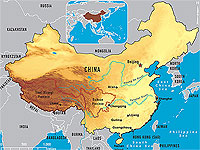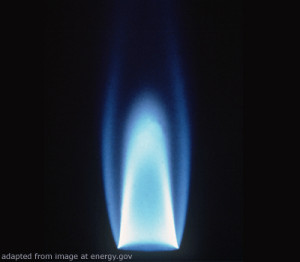Russia-China gas deal spells trouble for the dollar

(Business New Europe – bne.eu – INVISIBLE HAND – Liam Halligan in London, Editor-at-Large of BNE – May 28, 2014)
The St Petersburg International Economic Forum (SPIEF), now in its 18th year, was less well attended than usual. The absence of various US and Western Europe CEOs, responding to pressure from their governments following sanctions on Russia, was heavily commented upon in the West.
 Less widely noticed was one of the most important pieces of news to emerge from Russia since the Soviet collapse of the early-1990s – namely the $400bn deal struck between Moscow and Beijing, under which Russia will supply 38bn cubic metres a year (cm/y) of gas to China over 30 years from 2018.
Less widely noticed was one of the most important pieces of news to emerge from Russia since the Soviet collapse of the early-1990s – namely the $400bn deal struck between Moscow and Beijing, under which Russia will supply 38bn cubic metres a year (cm/y) of gas to China over 30 years from 2018.
Mosow and Beijing are to share the $77bn cost of building the new “Power of Siberia” pipeline, stretching from Eastern Siberia to China’s populous north-east. A second gas pipeline, to the Western Provinces of the People’s Republic, may also be built, expanding the annual Chinese gas purchase to 61bn cm/y.
After ten years of negotiation, state-run energy giants Gazprom and CNPC signed a memorandum of understanding last year. Putin’s recent visit to China, and public handshakes at the forum, cemented the deal. Russia, source of a third of Western Europe’s gas supplies, will soon have a vast alternative market. That can only put upward pressure on retail gas prices across the EU – one reason, perhaps, the deal drove relatively few western headlines.
Frenemies
Enemies for much of the Cold War, Russia and China are now building serious commercial ties across their 2,700-mile border. Trade between them amounted to just $12bn a decade ago, spiraling to $90bn in 2013. Both sides recognize now the vast synergies between the world’s largest energy exporter and the most populous nation, biggest manufacturer and now biggest energy importer on earth.
In 2009, Rosneft secured a $25bn oil swap contract with China. The state-run Russian oil giant signed an additional $270bn deal in 2013, agreeing to send an extra 300,000 barrels a day (b/d) eastward for 25 years, doubling its crude supplies to China. Russia now sells 750,000 b/d to Asia as a whole, a fifth of its oil exports. Having previously relied on cumbersome freight rail, Sino-Russian oil trade now benefits from a direct link – the ESPO (East-Siberia-Pacific-Ocean) pipeline, which opened in 2010.
With cross-border crude flows having risen, this new gas supply deal is a logical next step. The price remains secret, but the scale of the headline supplies and financials suggest $350-$370 per 1,000 cm. Not bad from a Russian perspective, that’s still less than it costs China to import liquefied nautral gas (LNG) by ship from Qatar and elsewhere – and with less geo-strategic risk.
Despite the opaque terms, the geopolitical implications of this Sino-Russian tie-up are obvious, to anyone prepared to think them through. Yes, Moscow now has more price leverage over Europe, but the real importance of this “pivot to Asia” is that Russia and China could soon be settling massive energy trades in a currency other than the dollar.
As long as the greenback is the world’s petrocurrency, remains the reserve currency of choice for central banks too. That allows the US to continue borrowing with “exorbitant privilege”, as it has done for decades, simply printing money to pay off foreign creditors.
China’s voracious appetite for energy imports, and the US’ increased focus on domestic production, mean the days of dollar-priced energy, and related dollar-dominance, are starting to look numbered. Beijing has recently struck numerous agreements with major trading partners like Brazil and India that bypass the dollar. China and Russia have also set up ruble-yuan swap facilities that push the US currency out of the picture.
If Beijing and Moscow decide totally to drop dollar energy pricing, the US’ reserve currency status could unravel, undermining the US Treasury market. That would complicate (to say the least) Washington’s ability to rack up enormous annual budget deficits and finance its vast and still fast-growing $17,500bn of dollar-denominated debt.
So what are the chances? Russian energy minister Alexander Novak reminded SPIEF that the new Chinese-Russian gas contract is, for now, dollar-denominated. He highlighted, though, that the Finance Ministry is working on transferring increasing numbers of export deals into rubles, including those involving hydrocarbons, as a result of recent western sanctions. It’s also clear, in the same vein, that Wall Street and the City could be squeezed out of deals involving Russian firms, again due to sanctions tit-for-tat. Much of the $27bn Russia needs to finance its vast Yamal Arctic LNG project, for instance, will now come from Chinese lenders.
While Russia’s exports partners do sometimes settle in rubles, most Sino-Russian trade is still in dollars. But that’s now starting to change. Certainly, the combination of this new gas deal, and sanctions, has seen both Moscow and Beijing step up bi-lateral efforts to facilitate large-scale non-dollar settlement. Gazprom is meanwhile considering the sale of yuan-denominated bonds to finance its own expansion.
After Novak said his piece, Putin turned the screw a little more. “We plan to double bilateral between Russia and China to $200bn by 2020…and, in tandem, continue boosting the role of the ruble and the yuan,” the Russian President told SPIEF delegates. “It’s no secret both Russia and China have high foreign currency reserves,” Putin continued. “It’s very important to place these reserves rationally and securely”.
Debasing the dollar
This is the heart of the matter. China has the world’s largest haul of central bank reserves, with Russia boasting the third or fourth biggest, depending on your definition. Much of each country’s sovereign wealth is dollar-denominated, not least their respective tranches of US T-bills.
Originally attracted by the dollar’s stability, the big emerging markets have become increasingly miffed in recent years by the US’ deliberate currency debasement, as Washington has fired up the virtual printing press to stop interest rates spiraling despite massive extra borrowing.
Since such “quantitative easing” began, the US base money supply has ballooned. From $800bn in late 2008, the Federal Reserve’s balance sheet is set to hit $5,000bn by the end of 2014 – even including “tapering”. That’s bad news for foreign creditors like China and Russia, with vast dollar-denominated reserves and debt instruments, as it dilutes the value of what they own.
The dollar’s reserve currency status won’t end anytime soon, but the global payments system is now moving inexorably towards that outcome. The US currency accounted for just 33% of all foreign exchange holdings in 2013, on IMF numbers, down from 55% in 2001.
While Russia has lately sold a sizeable chunk of its T-bills, possibly in protest at western sanctions, neither Beijing nor Moscow can divest too rapidly, lest their actions cause a currency lurch, so cannibalizing the value of their remaining Uncle Sam IOUs. In the meantime, though, debasement is happening on a grand scale, as the US continues abusing reserve currency status. So China and Russia must act.
Eventually, within a decade or so, a “reserve currency basket” may emerge, with central banks storing wealth in some combination of dollars, yuan, rupee, reals and rubles, as well as precious metals. Perhaps some kind of synthetic mix of the world’s leading currencies will emerge, with emphasis placed, after years of QE, on assets backed by commodities and other tangibles.
Central banks may also include Bitcoin in their reserve basket, or another cyber-currency variant. No? Mankind has long sought scarcity – be it with shells, stones or metallic elements – to store wealth. Now the money-printing taboo has been broken by yet another generation, it makes total sense to use complex computer algorithms to ensure that only a certain amount of a particular currency unit can exist. So far, around 13m Bitcoins have been “mined”, with a 21m upper limit.
While I don’t believe this Sino-Russian gas deal threatens Western energy security – Moscow needs both European and Asian markets – it does give Russia more leverage over EU prices. The far bigger issue, though, is the reserve currency status of the dollar. This is already diminishing – gradually, yes, but at a quickening pace. Bit by bit, as dollar debasement continues, central banks everywhere will move to divest T-bills and shift their reserves.
By putting a major non-dollar energy deal on the map, one that’s possible and maybe even probable, Moscow and Beijing have illustrated their ability, should they so choose, to upend the US-centric system of global finance. This huge Russia-China gas contract, raising the very real prospect of ruble-yuan commodity trading across the vast Eurasian landmass, turns the heat up on the West.
